Introduction
The Eye of Ra, Eye of Horus and wedjat eye are all different names given to representations of eyes with similar distinctive markings which appear throughout Ancient Egypt on tomb and temple surfaces, on objects and in the form of jewellery and amulets. The underlying beliefs and ideas associated with these representations are often confusing, particularly given that the different forms of the eye are not always well characterized and distinguished from each other.
The Eyes, in the shape of a human eye with the markings of a falcon, are one of the best known images from ancient Egypt and are still popular today as modern symbols evoking ancient Egypt. Some of the standard texts on Egyptian religion make only passing reference to the Eye forms, if they make any reference to them at all, and that even when they do they often fail to distinguish between the Eye of Horus and the Eye of Ra, or to define the key characteristics of the wedjat eye. Those authors who have tackled the topic have made it clear why others have either skimmed the subject or avoided it entirely: the subject is far from straight forward.
What follows in this short article is an exploration of the Eye of Horus and the Eye of Ra, and the use of a generic eye (from here on referred to as “the Eye”), as a religious motif and magical symbol.
The origin and original significance of the design of the Eye are unknown. Although the pupil, iris and shape of the eye are human in form, the markings around it are thought to be derived from the falcon, which were often associated with both the sun-god god Ra and with the sky deity Horus. Ra and Horus were both important deities from the earliest periods of Egyptian formal religion. Both have powerful links with solar themes and both were closely associated with the Pharaoh. The representation of the Eye was very common from the Old Kingdom onwards, and had general associations of healing, protection, restoration and vitality. It is often referred to as the wedjat eye.
The Eye of Ra
The Eye of Ra is mentioned in numerous myths, and even when the same core myth is recorded there tend to be many variations. Ra is one of the great solar deities of ancient Egypt, central to a number of creation myths. He shares many features with the deity Atum, with whom he was often syncretised in various myths. He was a creator god, ruler of the universe, the first king of Egypt, the sun, often shown as a hawk or falcon with a sun disk surrounded by a serpent on his head.
In the Heliopolis creation myth the creator deity is Atum, or Atum-Ra, later identified simply as Ra. Ra created two children, a male, Shu (air) and his sister Tefnut (moisture). Shu and Tefnut in turn produced Geb (the earth) and his sister Nut (the sky). The children of Geb and Nut were Osiris, Isis, Seth and Nephthys. Between them they were known as the Heliopolis Ennead (or nine). Geb and Nut were forced apart by their father Shu to produce the sky above, the earth below, and the air and moisture between them – the realm of living humans. In a version of the creation myth dating back to the Old Kingdom Pyramid Texts, Shu and Tefnut became lost in the Primeval Sea. Ra sent his eye to search for them. When the Eye returned she was so grieved to see that Ra has replaced her with a new eye that she shed tears. Her tears gave birth to humanity. Thereafter, when the eye goddess was at Ra’s side, she took the form of a serpent coiled on the deity’s forehead, poised to fight his enemies, now known as the uraeus and best known from the Eighteenth Dynasty golden mask of Tutankhamun, although images of the uraeus are known from as early as the First Dynasty. The Eye of Ra was always able to leave Ra, to act as a servant of the god Ra in the form of an eye goddess.
In different myths the Eye is assigned to other mainly female deities, usually his daughters. The best known of these are the goddesses Hathor (sometimes represented as a cow), Sekhmet (a lioness), Wadjet (usually shown as a cobra), Mut (sometimes shown as a vulture), Bastet (a cat), Nekhebet (another vulture deity) and Tefnut (usually shown as a lioness). In the Middle Kingdom Coffin Text IV Hathor makes the statement that she is the eye of Horus. Other lion deities associated with the Eye were Mehkit and Mesjet, the latter being a specific form of the Eye of Ra known only from a stela of the 21st Dynasty found at Abydos and now in Brussels. Decorative elements on artefacts representing Bastet sometimes bear solar images including the Eye. Baboons were believed to greet the sun as it rose and representations of the baboon are often shown holding the eye. The Eye is also commonly shown in association with various forms of the divine cow, particularly Mekhweret and Hesat. In the 17th chapter of the New Kingdom “Book of the Dead” the divine cow is referred to as the “Eye of Ra”. In all guises the female form of the Eye of Ra tends to be vengeful to the enemies of Ra, delivering violence, destruction, sickness and even death.
Perhaps the best known of the stories associated with the Eye of Ra is the myth that tells of the rebellion by Ra’s human subjects. When the god became old some of his subjects rebelled against him. Ra responded by sending his Eye, in the form (usually) of Hathor to punish his enemies. Hathor, a peaceful deity, took the form of Sekhmet, a powerful lioness goddess of war and vengeance. In the form of the Eye, Sekhmet was so vengeful that she nearly destroyed humanity, in spite of Ra’s attempts to prevent further bloodshed. Ra was forced to conspire against his daughter in order to prevent the annihilation of the human race. Successful, but exhausted, he abdicated his throne and assigned the task of teaching wisdom to the human race to the god Thoth. Hathor raised Ra to the skies where he became the sun.
In another version of the myth, Ra and the eye goddess have a disagreement about her treatment of humanity and she flees to the desert (or the land of Punt, depending on the version) until Ra can eventually lure her back. There are various indications in the desert regions that the solar eye was an important deity in these areas, and that the routes that travellers used to traverse the desert between the Nile and the oases and elsewhere were considered to be the routes by which she might herself have returned to the Nile to be with Ra. One example, from Wadi Hilal near Elkab, is a place of worship for a localized form of the solar eye. Another comes from the temple of Medamud where a wall of the central kiosk at the entrance to the temple contains a hymn to Hathor the Gold, which celebrates the return of the goddess in the form of a solar eye to the Nile valley with an entourage of humans and animals.
In the Book of the Two Ways, one of the Middle Kingdom Coffin Texts, the Eye of Ra is robbed or damaged by the serpent deity Apep. Ra is wounded but emerges triumphant. This theme is also picked up in New Kingdom funerary texts.
Perhaps because he was the son of Atum-Ra, Shu is also associated with the Eye of Ra. Shu is usually represented in human form with an ostrich feather on his head, or with the head of a lion. In the latter guise he was worshipped as a form of the Eye of Ra at Leontopolis (modern Tell el-Muqdam) in the Delta.
As the sun god, Ra was closely associated with the Pharaoh whose name, from the 5th Dynasty onward, included the title Son of Ra, indicating that the Pharaoh was the direct descendant of the deity himself. The first three kings of the Fifth Dynasty were said to have been born of Ra by a human woman, witnessed by Isis, Nephthys, Heqat and Meskhenet. A number of pharaohs also incorporated the name of Ra into their own names – for example, the name Ramesses means “born of Ra.” The Pharaohs adopted the uraeus, the symbol of the eye as a serpent poised for battle on the forehead of Ra, on the pharaoh’s crown during the New Kingdom.
The Eye of Horus
Horus was an early deity, represented as a cosmic entity, whose eyes were the sun and moon. The mythology associated with Horus is complex and the character of the deity changes over time. From being a cosmic falcon he later becomes the son of Isis and Osiris and is important in various myths involving his parents and his uncle Seth, brother of Osiris, and he later became closely associated with other deities. For the pharaohs he was important as one of the first rulers of Egypt, inheriting the throne from his father Osiris, a throne which he ascended to only after conflict with his uncle Seth – a battle of titans, which represents the winning of order (maat) over chaos (isfet). Although Ra was the first king of Egypt, Horus is usually considered to have been the role model for Egyptian kings.
Somewhat confusingly there are two forms of Horus. Horus the Elder was the cosmic falcon whose eyes were the sun and moon. In his other form, Horus Son of Isis, he was the young heir to the throne of Osiris who fought Seth for the throne and avenged his father to become Egypt’s ruler. By the Middle Kingdom most kings associated themselves with this latter form of Horus.
The association of the Eye with the deity Horus begins with the myths of the disputes between the deities Horus and Seth, called the Contendings of Horus and Seth. Seth is usually portrayed as a negative force and in early versions of the myth is the uncle of Horus (in later version he is described as his brother). In the myth Seth murdered Osiris, the father of Horus, in order to gain the throne. Horus, of course, wished to reclaim the throne for himself as the rightful heir. During the dispute Seth stole one of the eyes of Horus whilst the deity was asleep, the eye identified with the moon. In another version both the eyes were removed. The stolen eye or eyes were, in different versions, either buried, thrown into the Primeval Ocean or swallowed by Seth. In some versions of the myth Seth broke the eye into pieces. This, or these, had to be restored by, in different versions, either the deity Thoth or the goddesses Hathor or Isis.
The term wedjat, usually associated with the symbol of the Eye, seems originally to have referred specifically to the left (lunar) eye of Horus, meaning whole, complete or restored, but has become adopted as a general description for all representations of the Eye. The term wedjat also seems to refer to the version of the myth where the eye is split into pieces by Seth and has to be reconstructed before it can be restored to Horus. After the eye was restored by Horus it was named the wedjat eye, the lunar left eye. The power of the wedjat eye helped Horus to restore his father Osiris to eternal life in the netherworld where he reigned over eternity.
An additional section of the Contendings recounts that Horus gave his recovered eye to Osiris as an offering. When Osiris accepted the offering and ate the eye he was given life. Again, the themes connected with the eye of Horus are associated with healing and restoration.
Just to add to the confusion in some accounts the right eye of Horus, the solar eye, is the eye of Ra. In the Middle Kingdom Coffin Text number I Bastet is equated with the eye of Horus. In the 19th Dynasty Papyrus of Hunefer, Thoth is shown offering the wedjat eye to the divine cow, and the 19th Dynasty Papyrus of Ani now in the British Museum shows a cow emerging from the mountainside with the wedjat eye in place of her own eye. On the whole, however, the Eye of Horus is connected with Horus alone.
The combined ideas of healing, restoration and protection probably account for why the emblem was such a popular theme in ancient Egypt, often being made into personal amulets. The ideas of health and restoration also led to the Eye being incorporated into funerary rites.
Early rulers had their names represented in rectangular frames called serekhs. A serekh consisted of a vertical rectangle with a palace façade at the bottom, the name contained within the rectangle about the façade and the Horus falcon sitting above. These are known as their Horus names. An early example is the serekh of the third ruler of the First Dynasty, Djet. The Horus falcon was show at rest until the reign of King Djer, from when it was shown poised for flight. Later on the king was given four additional official names, one of which was the Golden Horus name. As with the name of Ra, the name of Horus was frequently incorporated into the king’s name, as with the name of the Eighteenth Dynasty pharaoh Horemheb, where the Hor part of the name stands for Horus.
Identifying which eye is which
The eyes of Horus, the solar eye of Ra and the eye goddess all blur together in Egyptian iconography, probably because the associations of each are so similar to each other. Hence the wedjat eye amulet can often be taken as a generic form but, at the same time, the eye is sometimes presented in a particular context which makes its associations clear.
Whenever the Eye appears in isolation it is almost impossible to know whether it is the Eye of Ra or the Eye of Horus, although the associations with Horus as a deity representing healing, protection and offerings makes it the most likely candidate for the greater majority of tomb representations, stelae, statues and amulets. In this form it is usually termed the wedjat eye.
When the eye is shown in the act of offering it probably refers to the eye of Horus, who offered his own eye to his father Osiris. That act of offering seems to have been translated in tomb scenes into the eye itself making an offering. An example can be found in the tomb of Pashedu at Deir el-Medineh where the solar eye is shown presenting an offering to Osiris.
One distinction that is sometimes possible to make is the difference between the left and right eyes of the Horus wedjat. The left hand eye was regarded as the moon or evening star and represented healing and completeness. The right hand eye is connected with the sun or morning star and represents power and perfection.
Another way of distinguishing them is by the colour of the iris. If the eye is red it is solar, so it is either the eye of Ra or the right eye of Horus. If it is both red and cobra-crowned it is Ra, because the cobra uraeus is most usually associated with the sun god, not with Horus. If the eye is blue then it is the left eye of Horus. There are always exceptions, however. In photograph at the head of this article there is a left eye flanked by a vulture and a cobra. At first glance it might appear that this would be the eye of Ra, because of the cobra. But the eye is blue. In this case the cobra is wearing the red crown of Lower Egypt and the vulture wears the white crown of Upper Egypt. The vulture has her claws wrapped around the shen symbol of eternity. The counterweight, not shown in the photograph, consists of a tyet or knot of Isis (welfare) flanked by two djed pillars (stability). The wedjat eye is associated with health and well being. Overall, then, the combined iconography of the necklace can be read and interpreted. It appears to represent the eternal stability, health and welfare of either Upper and Lower Egypt or, more probably, the pharaoh himself as the ruler of Egypt.
The role of the eye in funerary contexts
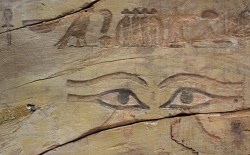
Middle Kingdom coffin of Hetepnebi, the eyes facing east. British Museum (photograph by Andrea Byrnes).
As a motif the Eye is known from religious contexts from the Old Kingdom becomes most popular from the First Intermediate and Middle Kingdom periods, when twin eyes appeared on coffins. In the New Kingdom it was a popular amulet and appears in many tomb scenes, both royal and otherwise, and it remained popular into the Graeco-Roman period, when highly elaborate amulets featuring the Eye were produced.
In the First Intermediate and Middle Kingdom the positioning of twin eyes on the left side of coffins may have been associated with both the idea of allowing the dead person to see (the dead were laid to rest facing to the left) and with the concept of the protection and restoration of the deceased individual within the coffin.
By the New Kingdom the Eye also clearly represented the act of offering. As in many temples and tombs, in the 20th Dynasty tomb of Ramesses X, the ruler is shown presenting eyes to the deities. The Eye was also frequently shown in vignettes accompanying chapters of the “Book of the Dead,” a funerary text which accompanied the deceased as a guide to the netherworld. In Chapter 17 of the Book of the Dead of the scribe Ani, for example, the Eye is shown twice in different roles.
The generic form of the Eye was closely associated with the mummified individual. A dead king could be buried with pairs of sacred eye bracelets. The incision mark on the body was often concealed by a metal plate which could be inscribed with an image of the Eye. Similarly, amulets were placed within the wrappings sometimes singly, sometimes in pairs. The role of the amulets was to protect the akh, one of the five components of the deceased, which also included the shadow, the name, the ba and the ka. The ka was the essence of the living person and stayed in the living world, needing sustenance. The akh was the form that the dead took to inhabit the underworld and relied on the nightly reunion of the ba and the ka for its continued survival. The ba was able to move between the worlds of the living and the dead person and had the role of reuniting the akh with the ka to ensure the survival of the individual in the afterlife. An example is the mummy of the Lady Katebet which dates from the Graeco-Roman period but whose wrapping contained amulets at least 1000 years older. The outer layers of the wrapping contained glazed amulets and an inner layer contained amulets made of stone. The amulets in the inner layer included two pairs of eyes and four single right-facing eyes. Amulets arranged in wrappings were supposed to have a particular association with parts of the body, but many examples fail to follow the rules.
The Eye in everyday life
Everyday life is the most difficult aspect of the Egyptian past to access, because there are very few records of informal belief. One of the most popular and presumably most affordable ways of linking with religious ideas was to own an amulet. One of the frequently found amulets was the symbol of the Eye and was particularly elaborate after the Third Intermediate period. Amulets were small charms used to prevent harm and to ensure protection. Most were associated with specific ideas and were probably chosen for their particular magical properties. Although some amulets were created specifically for mummification in elite tombs, many more were adopted by ordinary people, with some keeping temporary amulets drawn on linen, papyrus or skin. In museums all over the world the Eye can be seen in great numbers amongst collections of amulets made of stones, precious metals and gems.
In the Amarna period when the traditional deities were officially replaced by one god, the Aten, various amulets were found in residential areas which showed that deities popular in domestic contexts prior to the Amarna period continued to be important – including the wedjat eyes.
A more elaborate personal item, usually associated with women and children, was the apotropaic (evil preventative) wand. This seems to have been a magical item whose function was associated with protection and healing. The Eye often features on these wands, of which there are around 150 known, in association with other magic symbols.
As with the eyes of Horus painted on Middle Kingdom coffins, the Eye painted on the prows of boats probably had mixed ideas of clear vision and protection.
Finally, the Eye was also used as a way of calculating fractions for purposes of medicinal prescription and measuring grain. Each section of the Eye represented a proportion by which the components could be measured. The iris of the Eye, for example, represents a quarter, whilst the eyebrow represents one eighth.
Conclusion
The symbol of the human eye with falcon markings is common throughout Dynastic Egyptian history, probably due to its powerful association with concepts like protection, revival and healing. Although it could be associated very specifically with either Ra or Horus, and there are several myths which talk about the Eyes of Ra and Horus, it also became blended to form a single generic eye, which encompasses all the ideas associated with both deities.
Bibliography
Bleiberg, E. 2008, To Live Forever, Brooklyn Museum
Borghouts, J. F. 1973, The Evil Eye of Apophis, the Journal of Egyptian Archaeology, vol. 59, (August 1973), 114-150
The British Museum, The Coffin of Gua, http://tinyurl.com/35w6co4
Darnell, J. C. 1995, Hathor returns to Medamud. Studien Zur Altägyptischen Kultur 22, 47-94
Darnell, J. C. 1997, The Apotropaic Goddess in the Eye, Studien zur Altägyptischen Kultur 24, 35-48
Darnell, J. C 2010, The Deserts. In Wilkinson, T., The Egyptian World. Routledge.
El Mahdy, C. 1989, Mummies, Myths and Magic. Thames and Hudson.
Gahlin, L. 2010, Creation Myths. In Wilkinson, T., The Egyptian World. Routledge.
Pinch, G. 2004, Egyptian Myth, Oxford University Press
Pinch, G. 2010, Magic in Ancient Egypt, University of Texas Press
Stevens. A. 2002, The Material Evidence for Domestic Religion at Amarna and Preliminary Remarks on its Interpretation, Journal of Egyptian Archaeology, vol.89 (2003) 43-168
Wilkinson, R.H. 1992, Reading Egyptian Art, Thames and Hudson
Wilkinson, R.H. 2003, The Complete Gods and Goddesses of Ancient Egypt, Thames and Hudson
Wilkinson, T.A.H. 1995, A New King in the Western Desert, Journal of Egyptian Archaeology vol. 81 (1995), 205-210

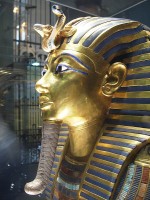
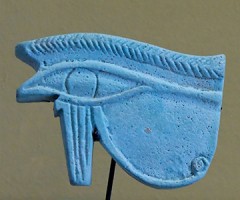
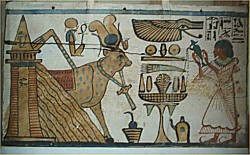
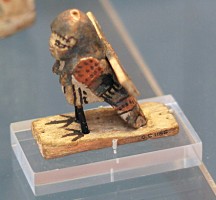
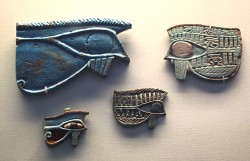
 By
By